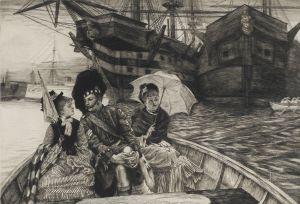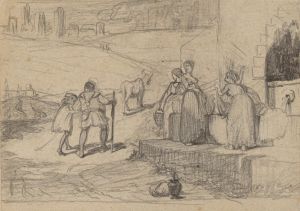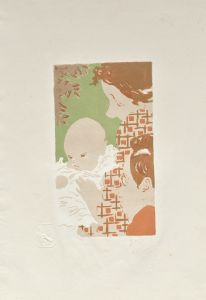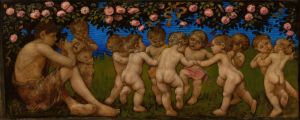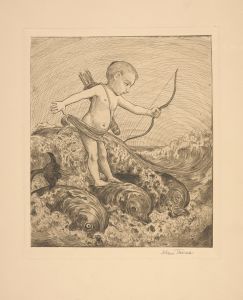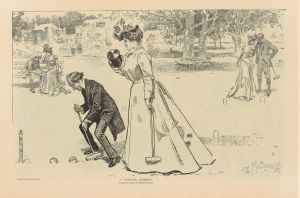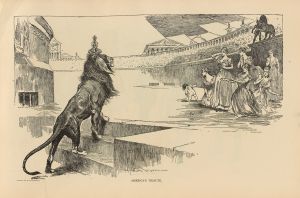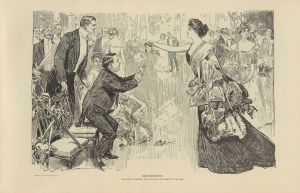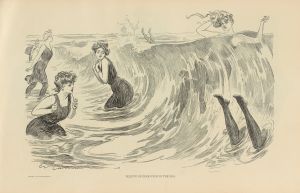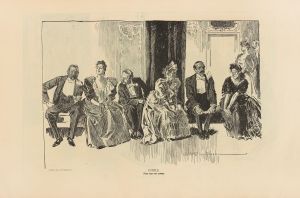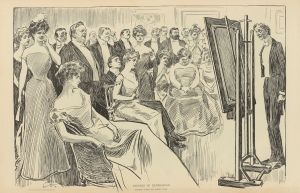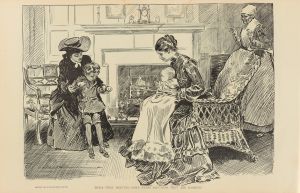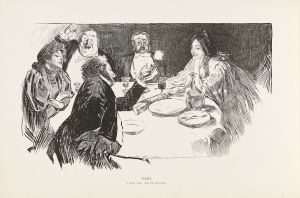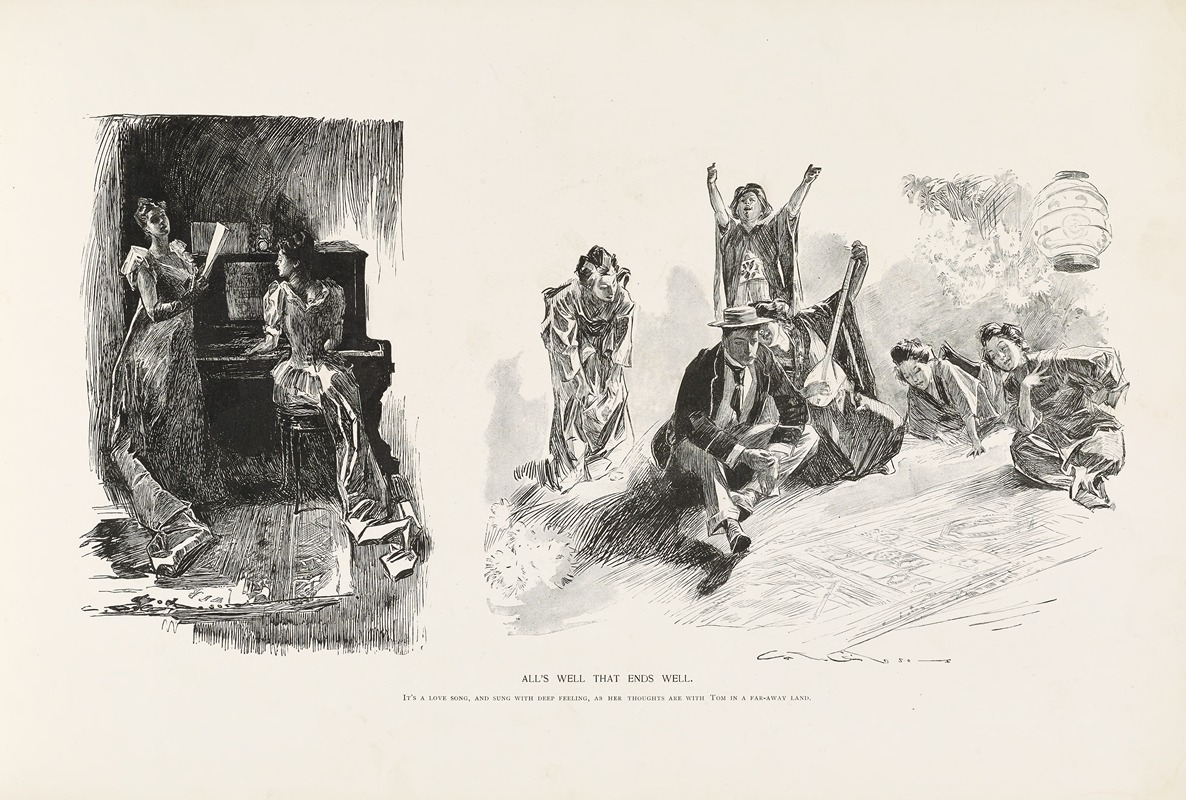
All’s well that ends well
A hand-painted replica of Charles Dana Gibson’s masterpiece All’s well that ends well, meticulously crafted by professional artists to capture the true essence of the original. Each piece is created with museum-quality canvas and rare mineral pigments, carefully painted by experienced artists with delicate brushstrokes and rich, layered colors to perfectly recreate the texture of the original artwork. Unlike machine-printed reproductions, this hand-painted version brings the painting to life, infused with the artist’s emotions and skill in every stroke. Whether for personal collection or home decoration, it instantly elevates the artistic atmosphere of any space.
Charles Dana Gibson was an influential American illustrator best known for creating the "Gibson Girl," a representation of the idealized American woman at the turn of the 20th century. His work captured the spirit and social dynamics of his time, and his illustrations were widely published in magazines such as Life, Harper's Weekly, and Scribner's.
"All’s Well That Ends Well" is one of Gibson's notable illustrations, though specific details about this particular piece are limited. Like many of Gibson's works, it likely reflects the social norms and gender roles of the late 19th and early 20th centuries. Gibson's illustrations often depicted scenes of courtship, romance, and the social interactions of the upper class, characterized by a blend of humor and social commentary.
The "Gibson Girl" was a central figure in many of Gibson's works, embodying independence, confidence, and beauty. She was often portrayed in various social settings, engaging with male counterparts, and navigating the complexities of relationships and societal expectations. This archetype became a cultural icon, influencing fashion and the perception of women during that era.
Gibson's artistic style was marked by its detailed pen-and-ink drawings, which conveyed a sense of elegance and sophistication. His ability to capture expressions and gestures added depth to his characters, making them relatable to the audience of his time. The popularity of his illustrations contributed to the spread of the "Gibson Girl" image across the United States and even internationally.
While specific information about "All’s Well That Ends Well" is scarce, it is reasonable to assume that the piece aligns with Gibson's broader body of work, reflecting themes of romance, societal norms, and the interplay between men and women. His illustrations often carried a narrative quality, inviting viewers to interpret the stories and emotions depicted in the scenes.
Gibson's impact on American culture extended beyond his illustrations. He played a significant role in shaping the visual language of his era, influencing both contemporary artists and the public's perception of gender roles. His work remains a valuable historical resource for understanding the cultural and social dynamics of the early 20th century.
In summary, while detailed information about the specific illustration "All’s Well That Ends Well" is limited, it is part of Charles Dana Gibson's larger oeuvre that captures the essence of his time. His illustrations, characterized by their elegance and narrative depth, continue to be appreciated for their artistic and cultural significance.





